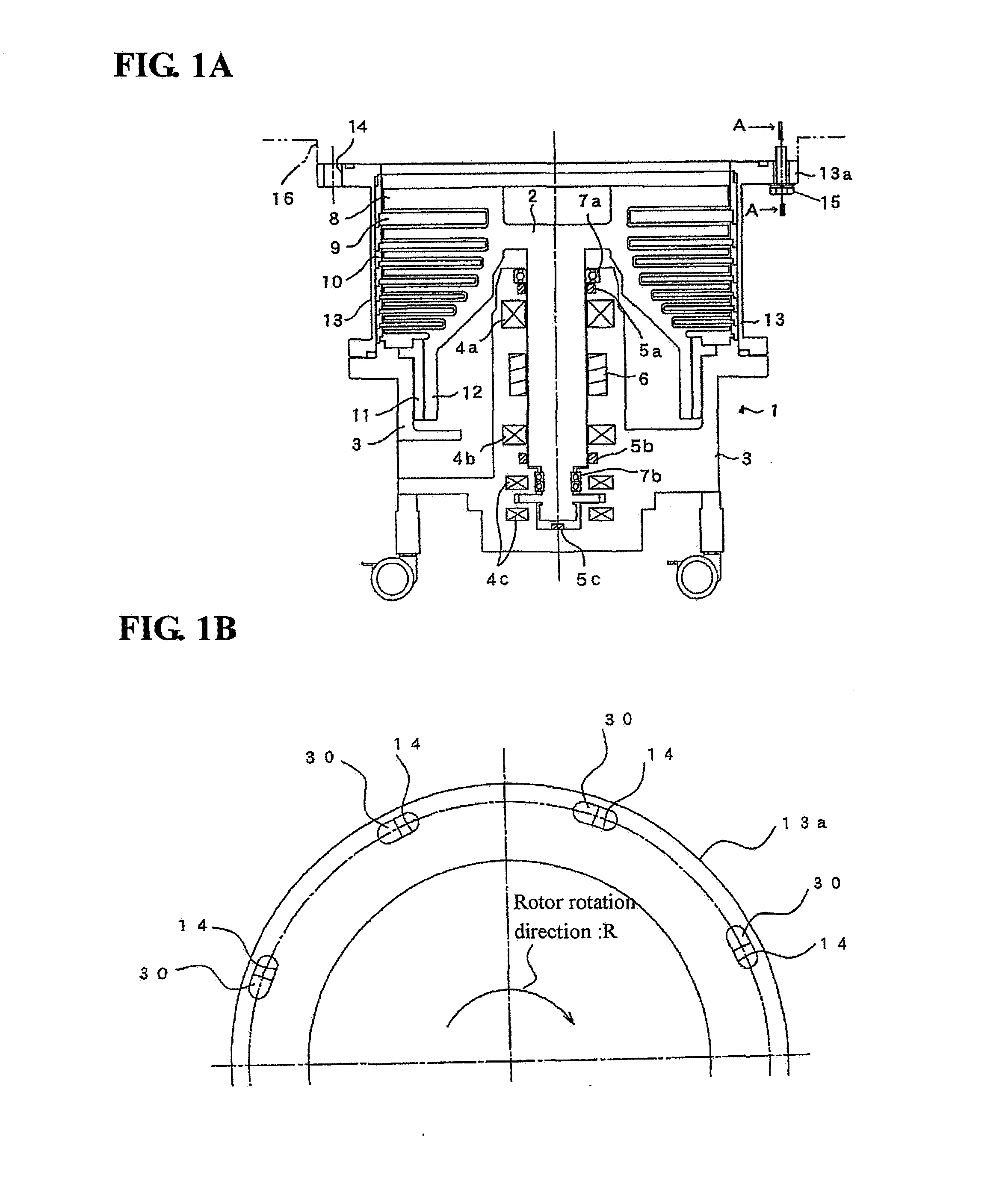Fastening structure and rotary vacuum pump
a technology of fastening structure and vacuum pump, which is applied in the direction of screws, washing machines, ways, etc., can solve the problems of rotors being subjected to a large centrifugal force, large impact force applied to stators, and rotors being susceptible to breakage, so as to reduce impact stress, prevent damage, and reduce impact stress
- Summary
- Abstract
- Description
- Claims
- Application Information
AI Technical Summary
Benefits of technology
Problems solved by technology
Method used
Image
Examples
Embodiment Construction
[0025]With reference to the drawings, an exemplary embodiment of the present invention will now be described. FIGS. 1A and 1B schematically show a turbo-molecular pump which employs a fastening structure relative to a target unit, according to one embodiment of the present invention, wherein FIG. 1A is a sectional view of the turbo-molecular pump, and FIG. 1B is a top plan view showing an upper half of a gas inlet flange of the turbo-molecular pump. The turbo-molecular pump 1 illustrated in FIGS. 1A and 1B is a magnetic bearing type which has a rotor 2 supported in a non-contact manner by three magnetic bearings 4a to 4c provided in a base 3. Each of the magnetic bearings 4a, 4b is a radial type, and the magnetic bearing 4c is an axial type.
[0026]The base 3 is provided with a motor 6 for rotationally driving the rotor 2, and three gap sensors 5a, 5b, 5c for detecting respective levitation positions of two touchdown bearings 7a, 7b and the rotor 2. A mechanical bearing is used for ea...
PUM
 Login to View More
Login to View More Abstract
Description
Claims
Application Information
 Login to View More
Login to View More - R&D
- Intellectual Property
- Life Sciences
- Materials
- Tech Scout
- Unparalleled Data Quality
- Higher Quality Content
- 60% Fewer Hallucinations
Browse by: Latest US Patents, China's latest patents, Technical Efficacy Thesaurus, Application Domain, Technology Topic, Popular Technical Reports.
© 2025 PatSnap. All rights reserved.Legal|Privacy policy|Modern Slavery Act Transparency Statement|Sitemap|About US| Contact US: help@patsnap.com



